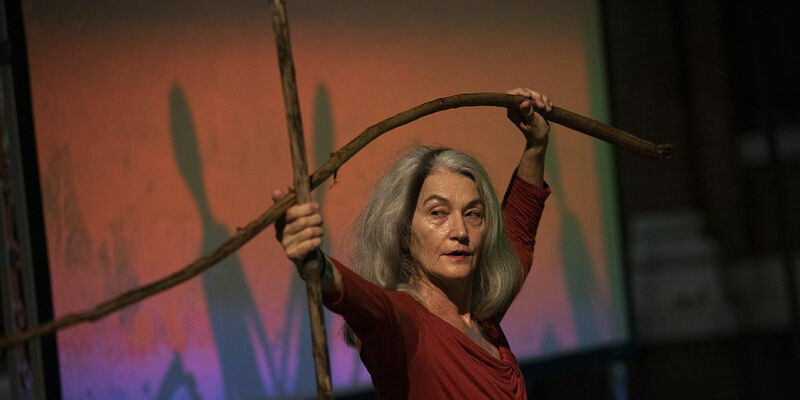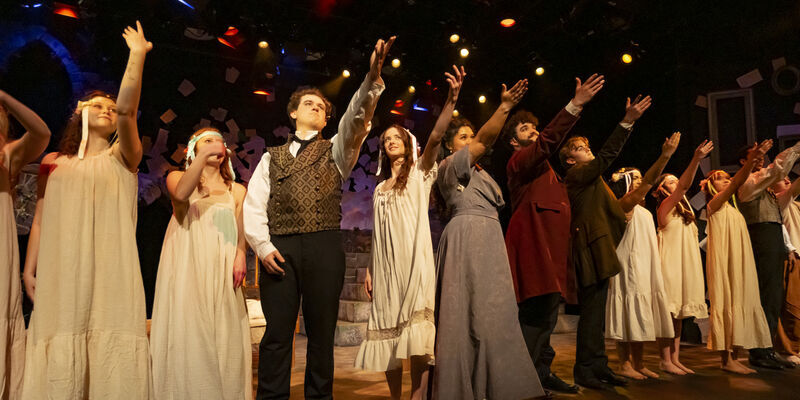Temple partners with The Inquirer for podcast series on MOVE bombing
The Logan Center and The Philadelphia Inquirer’s new six-part podcast series, MOVE: Untangling the Tragedy, examines the 1985 MOVE bombing and its lasting aftermath.

On May 13, 1985, the streets of Philadelphia shook with such force that some thought a gas main had blown. The quake, as it turned out, was the result of the Philadelphia Police Department dropping a bomb on the headquarters of MOVE, a Black liberation and environmentalist organization located in West Philadelphia. The bomb killed 11 people, including five children, and the resulting fire destroyed an entire city block.
It remains the only time in U.S. history that police dropped a bomb on citizens, yet many Americans, and even Philadelphians, know very little about the tragedy.
“Because the story is so complicated, it’s been really easy to put it aside and not talk about it,” said Yvonne Latty, director of Temple’s Logan Center for Urban Investigative Reporting and professor of journalism at the Klein College of Media and Communication. Latty serves as executive producer and wrote the podcast. “And as a result, generations that came after the bombing don’t even know about it.”
In response to this and ahead of the 40th anniversary of the bombing, the Logan Center teamed up with The Philadelphia Inquirer to produce a first-of-its-kind podcast series called MOVE: Untangling the Tragedy. The six-part series tells the full story of the MOVE bombing, from the context and backstory leading to the bombing to its immediate and lasting aftermath.
The first episode was released on April 22, and subsequent episodes will be released weekly on Tuesdays. The episodes range in length from 25 to 40 minutes, and each one takes listeners on an immersive journey through the history of MOVE and the 1985 bombing. The episodes feature firsthand accounts from journalists and news anchors who covered MOVE, community members who witnessed the bombing, MOVE leaders, former Philadelphia Mayor Wilson Goode, and more.
The series is produced and hosted by Linn Washington Jr., professor of journalism at Klein, who spent 50 years covering MOVE as a journalist for the Philadelphia Tribune and the Philadelphia Daily News.
“I just couldn’t believe it,” Washington said, recounting the 21-hour day he spent covering the bombing in May of 1985. “Despite having, at that point, a decade of covering police abuses in Philadelphia, I still couldn’t believe they would go that far, and they did. The one word that I keep coming back to is surreal. It was like urban warfare, but here we are right here in Philadelphia.”
Latty began planning the series last August, and Washington was one of the first people she contacted given his extensive coverage of MOVE throughout his career. She then looked for a media outlet to partner with for the series, as the Logan Center routinely partners with local outlets for its reporting projects. She was drawn to The Philadelphia Inquirer, which hadn’t, at that point, produced its own narrative podcast series yet.
“I’ve always thought they would be a perfect outlet for a podcast. I mean, Philadelphia is such a dynamic, rich city, and they do really excellent work, especially their investigative team,” Latty said. “When I first thought of this project, I thought they would be perfect to collaborate with.”
The Logan Center’s team has worked closely alongside Daniel Rubin, The Inquirer’s senior editor for investigations, as well as with a multidiscipline group of Temple students. Layla Jenkins, a student from the Tyler School of Art and Architecture, created the podcast’s artwork and Royce Hearn, a Klein student, produced the podcast’s score.
Natalie Reitz, KLN ’24, served as the podcast’s associate producer, lead researcher and tape assembler. She joined the project while a graduate student at Klein and continued to work on its production after she graduated and launched her multimedia freelance career.
Reitz dug through archival footage, most of which was housed in Temple Libraries’ Special Collections Research Center (SCRC), looking for compelling sound bites to include in the podcast.
“Some of the most interesting tape I found in the SCRC was by former WCAU videographer Pete Kane, who we also interview on the podcast,” Reitz said. “Listeners hear his reporting that was aired live on May 13, 1985, and get to hear aspects of his experience that weren’t a part of his reporting.”
The podcast also includes tape from Maida Odom, a former Klein faculty member who was working as a journalist for The Inquirer at the time of the bombing.
“We used her tape in a few episodes, just to give people a feel of what it was like there, and what it was like when she was running for her life and trying to dodge bullets,” Reitz continued.
Temple hosted a launch event for the podcast at the Temple Performing Arts Center on Friday, April 25. The event featured a live listening of the first episode, as well as a panel discussion and Q&A with reporters who covered the 1985 bombing, including Washington and Odom. Hundreds of people attended, including students, faculty, community members, Osage Avenue neighbors and MOVE members.
The podcast creators are excited to continue the conversation around the bombing as new episodes release in the coming weeks.
“It’s a really hard story to wrap your mind around in so many ways, but it’s also a really important part of Philadelphia history and American history,” Latty said.
“So much of Black history gets pushed to the margins,” Washington added. “We wanted to make sure that this story was told in some context so people could understand, and hopefully with understanding, we can avoid these types of incidents.”


